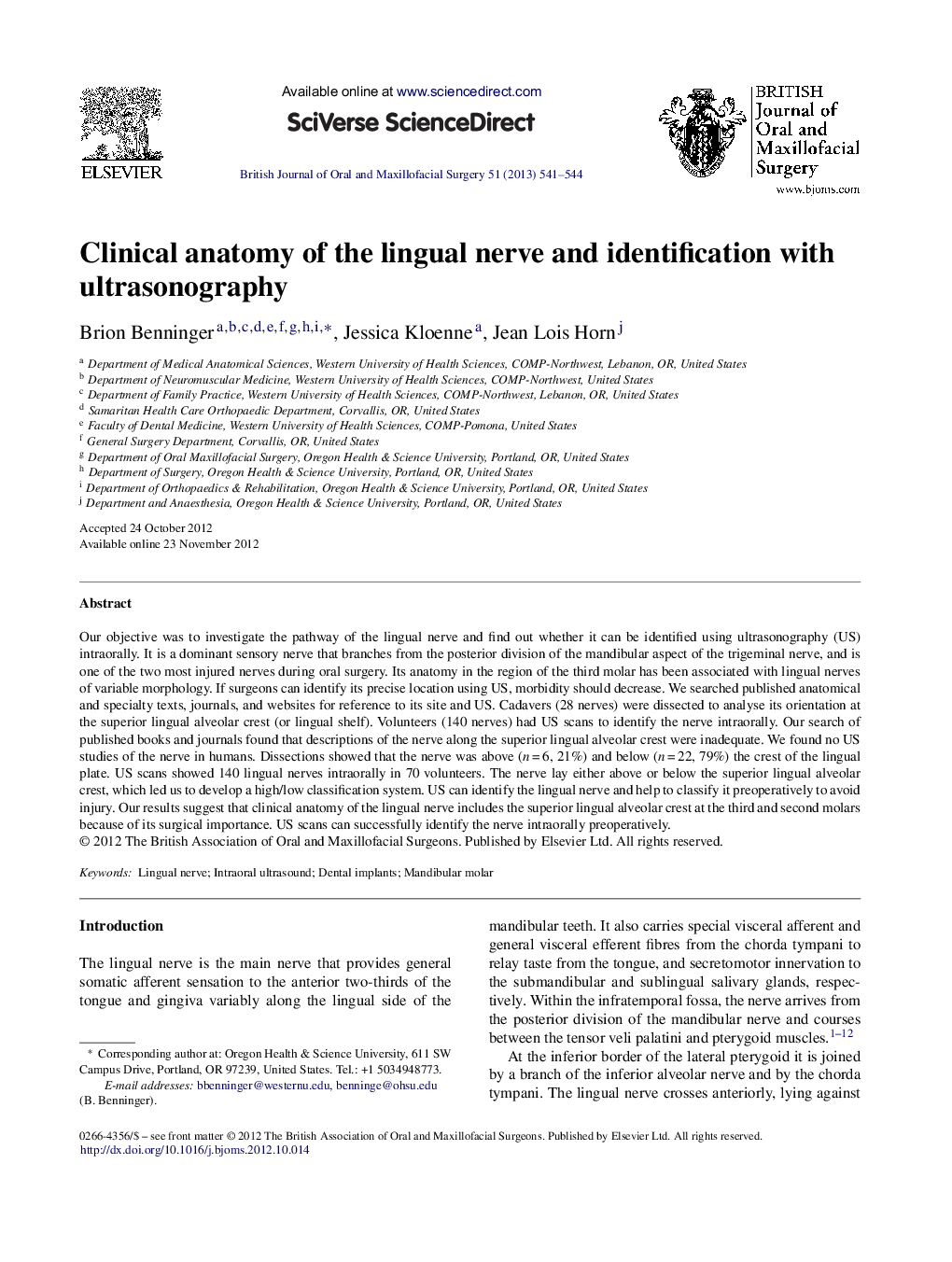| Article ID | Journal | Published Year | Pages | File Type |
|---|---|---|---|---|
| 3123439 | British Journal of Oral and Maxillofacial Surgery | 2013 | 4 Pages |
Our objective was to investigate the pathway of the lingual nerve and find out whether it can be identified using ultrasonography (US) intraorally. It is a dominant sensory nerve that branches from the posterior division of the mandibular aspect of the trigeminal nerve, and is one of the two most injured nerves during oral surgery. Its anatomy in the region of the third molar has been associated with lingual nerves of variable morphology. If surgeons can identify its precise location using US, morbidity should decrease. We searched published anatomical and specialty texts, journals, and websites for reference to its site and US. Cadavers (28 nerves) were dissected to analyse its orientation at the superior lingual alveolar crest (or lingual shelf). Volunteers (140 nerves) had US scans to identify the nerve intraorally. Our search of published books and journals found that descriptions of the nerve along the superior lingual alveolar crest were inadequate. We found no US studies of the nerve in humans. Dissections showed that the nerve was above (n = 6, 21%) and below (n = 22, 79%) the crest of the lingual plate. US scans showed 140 lingual nerves intraorally in 70 volunteers. The nerve lay either above or below the superior lingual alveolar crest, which led us to develop a high/low classification system. US can identify the lingual nerve and help to classify it preoperatively to avoid injury. Our results suggest that clinical anatomy of the lingual nerve includes the superior lingual alveolar crest at the third and second molars because of its surgical importance. US scans can successfully identify the nerve intraorally preoperatively.
